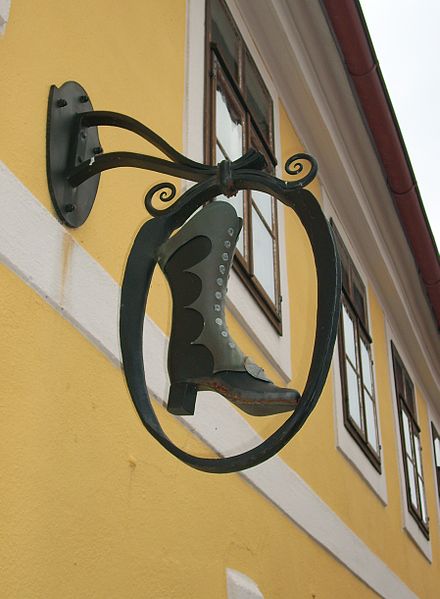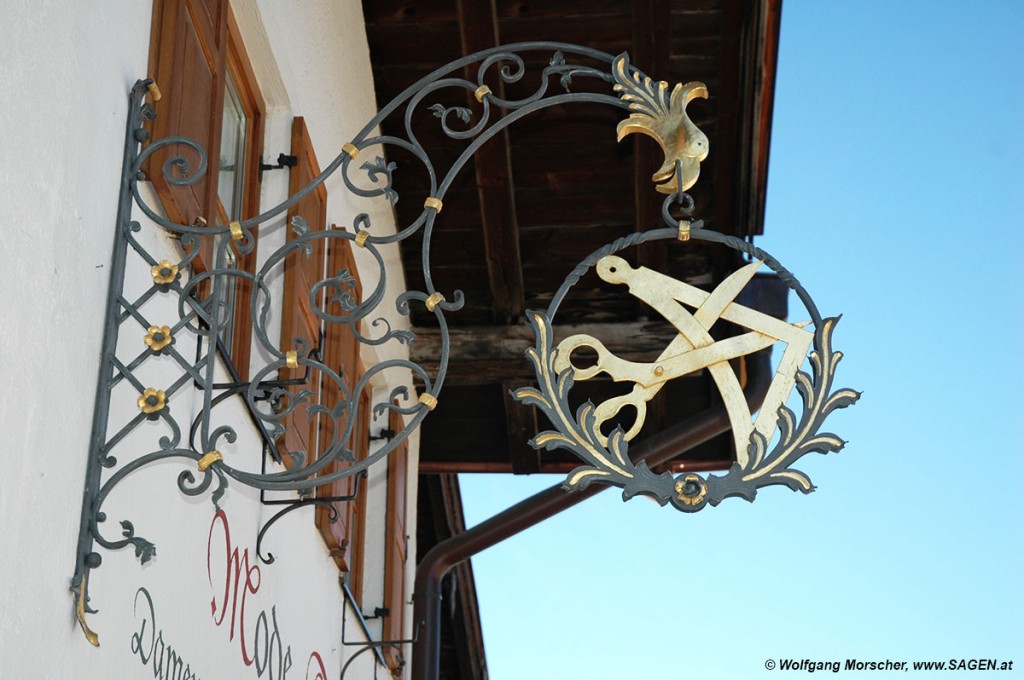
By Patrick Hunt –
Hanging over narrow cobblestone streets, guild signs or emblems (zunftzeichen) left over from medieval tradition are eye-catching rewards appreciated in many old walking streets of mostly German-speaking regions of Europe, including Germany itself as well as Austria and eastern Switzerland and even Tyrolean Italy. This is especially noted in conservation-minded alpine towns where historic preservation is proudly valued. These hanging iron signs can also be found in other language regions of Europe where such traditional crafts are esteemed, including Provence and other areas rich in medieval architecture whose ancient streets are mostly intact.
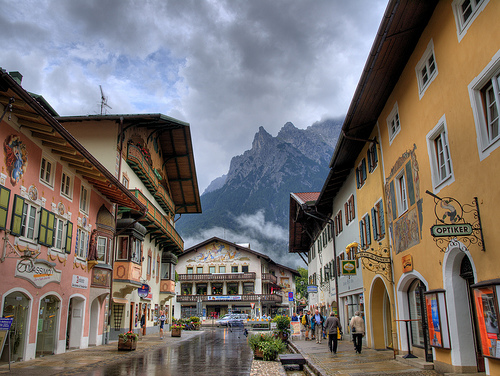
Hundreds of these remaining guild signs can be viewed, and when one can be found in a historic district, it’s easy to begin searching for others. For some reason I’m hoping to discover, German-speaking regions seem to have by far the highest number of surviving guild signs and related merchants’ wrought iron hanging signs. It might just signify that more medieval town centers remain in German-speaking regions, for whatever sociological phenomenon or vagaries of time that suggests.
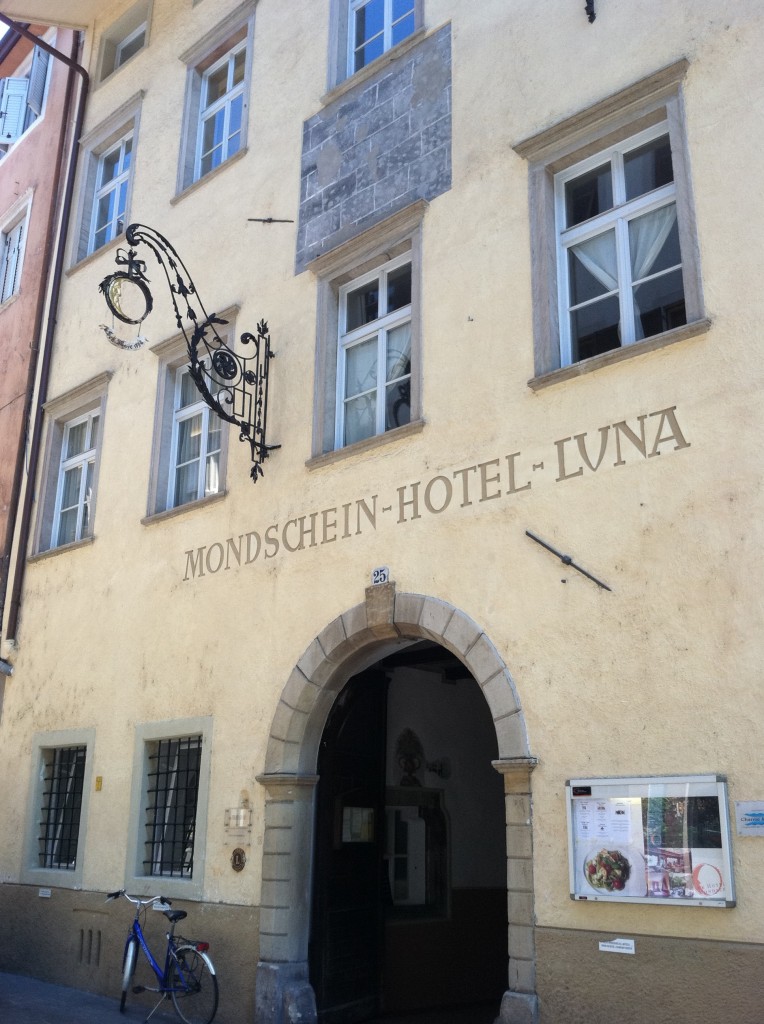
The photo just above is the moon sign of the Hotel Luna Mondschein over the Via dei Portici street in Bolzano (Bozen), where I stayed when filming on Otzi the Iceman for National Geographic/ NOVA last summer (2011).
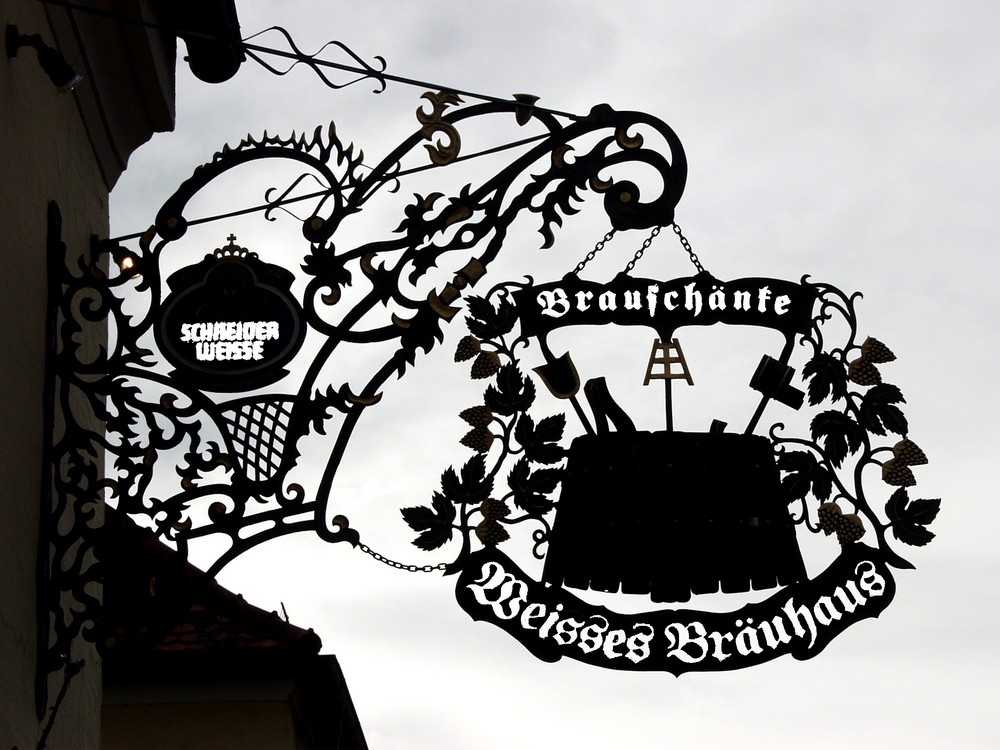
These shop emblems are usually made in wrought-iron and often gilded in a medieval tradition that values visual literacy when few could read or write but everyone could easily recognize emblematic signs.Continuing into relatively modern times, these guild or shop signs reflect pride in crafts or services provided in a distinctive way, since they often stick out from buildings up to four or five feet perpendicular to the direction of travel in a generally sedate mode. Where even possible, if driving an auto at any tempo higher than a largo crawl on a narrow street, they’ll usually be missed or just not fully appreciated for their intricate details.
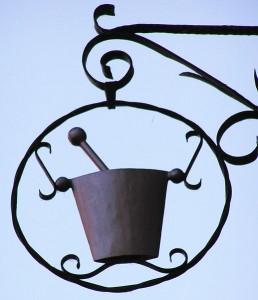
Because they are frequently not solid but foliated with a backdrop of sky showing through them. This results in their high visibility even in silhouette from either walking (or now cycling) direction, regardless of any script especially when the craft symbol shown is reasonably certain, as in the brewery (Bräuhaus) sign above (note the cooperage and the hops shovels and specialized rakes) or the apothecary image below with its mortar and pestle.
Some of the more or less ornate zunftzeichen signs that demanded my attention during visits in 2011-12 include in Bolzano (Bozen), Cologne, St. Gallen, Colmar, Strasbourg, Feldkirch, Grabs, and of course, Salzburg along the Getreidegasse where Mozart was born is famous for these signs. Salzburg’s Getreidegasse may have more of these densely hanging guild signs than any other street in Europe. Other towns rich in guild signs include Mittenwald in the region of Garmisch-Partenkirchen, Bavaria, as seen in the lead photo, and Colmar in Alsace, both with historic medieval town centers. One of my favorite guild signs in Europe is in the central pedestrian area of old medieval Colmar, rich in half-timbered houses and old shops that have continuity for half a millennium. Here Charcuterie Zimmerlin’s sign has such apropos embellishments around its lion: (see below) the lion wields a butcher’s cleaver, and a little girl is led by a pig on a leash to market; also surrounding the rectangular sign are sausage links. Signs like these almost make one laugh because they combine ad hominem gut appeal visual references with kitschy imagery.
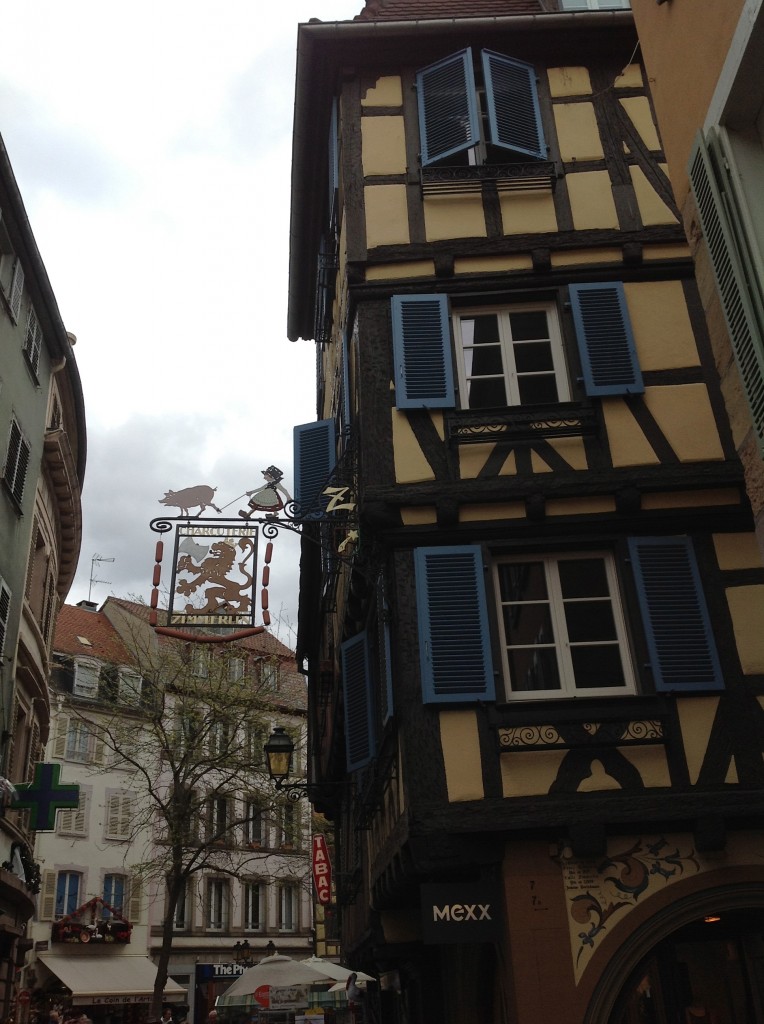
These guild signs were often crafted by specialized blacksmiths (Grobschmiede), and worked well as advertisements for purveyors of goods. While time-venerated wrought iron images of trade guild merchants were once common, including signs of locksmiths (Schlosser), bakers (Bäcker), pharmacists (Apotheker), brewers (Brauer), wine merchants (Weinhändler), tailors (Schneider), the tradition now includes many a small hotel and inn (Gasthaus) and just about anything else imaginable.
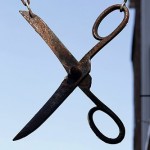
As technology progressed, even the traditional wrought iron image of a pair of oversize scissors from the 18th century could be superseded by images of 19th century sewing machines, epitome of high tech for its time, both seen here at left and right.
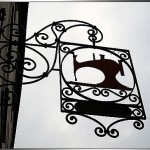
There is even a delightfully unique museum on the Wienerstrasse in Graz, Austria, that houses the Hans Schell Collection, highlighting the tradition of guild signs. The museum’s second floor has many of these wrought iron guild or shop signs on display along with many other wrought-iron artifacts including elaborate locks and keys. Acquisitions of vintage wrought iron guild signs can mean purchases of thousands of dollars or euros, as sales of such collectors’ items shown by the Hampel firm in Munich over the past few years continue to rise; as their demand increases. Not only collectors prize them: they are often purchased by new owners of vintage establishments who have renovated the old shops or hotels and want the authentic appeal these traditional signs bring, especially when seen hanging over the street where they are spotted long before a sign painted across the building’s front.
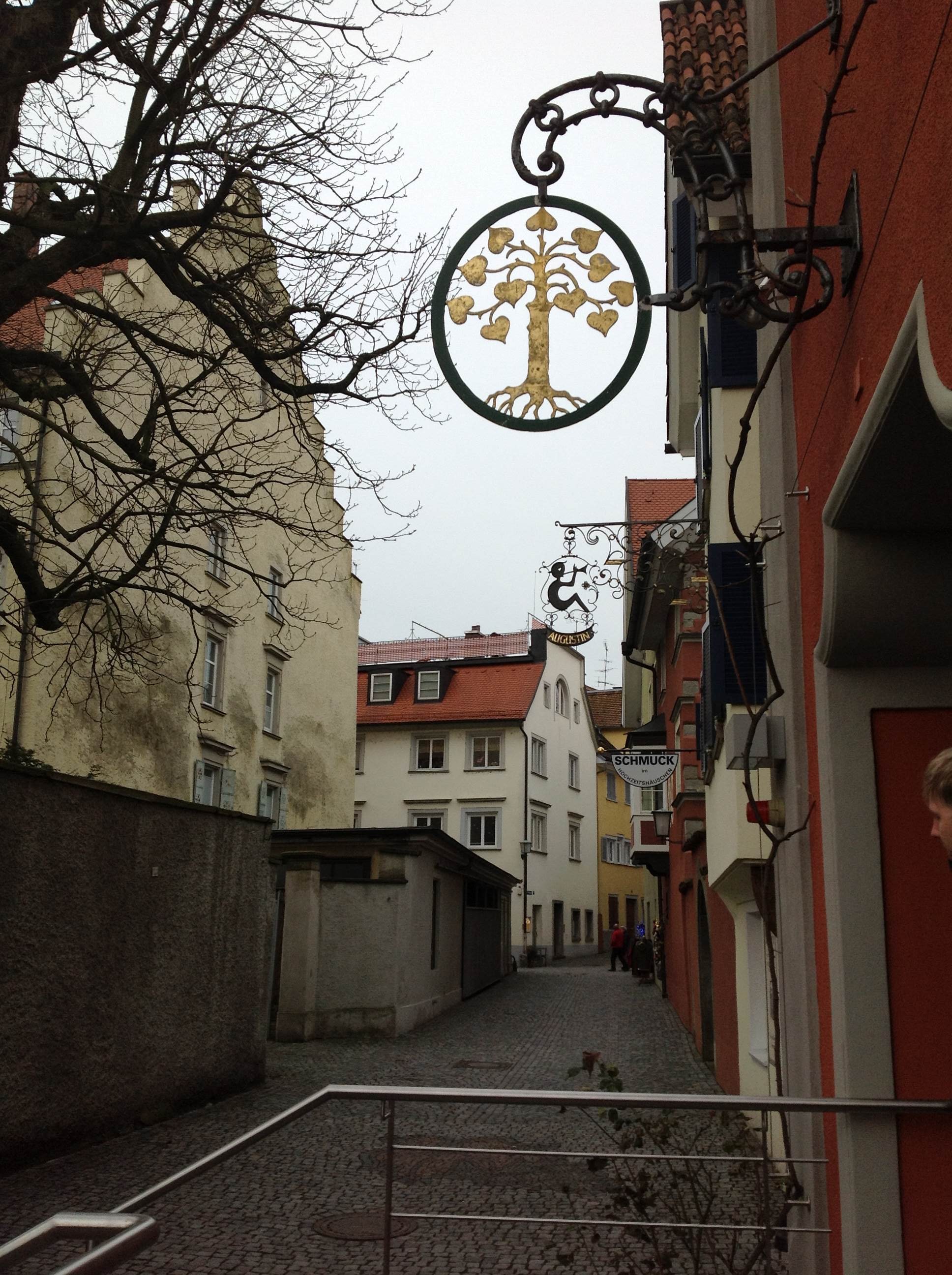
Here (above photo) is a small assortment of street signs in Lindau am Bodensee, including the closest one adjacent to the Lindauer Hof Hotel on the Seepromendade frontage, although this one is on the side street. On the Marktgasse near the great square of the Monastery of St. Gallen and its Stiftsbibliothek, the famed Conditorei Praline Scherrer sweethouse makes its mouthwatering statement with its gilded sign of sweet pastry and chocolate. I had a steaming tureen of rich hot chocolate there in late summer of last year (2011) when visiting the monastic library for research, as the sign clearly worked on me.
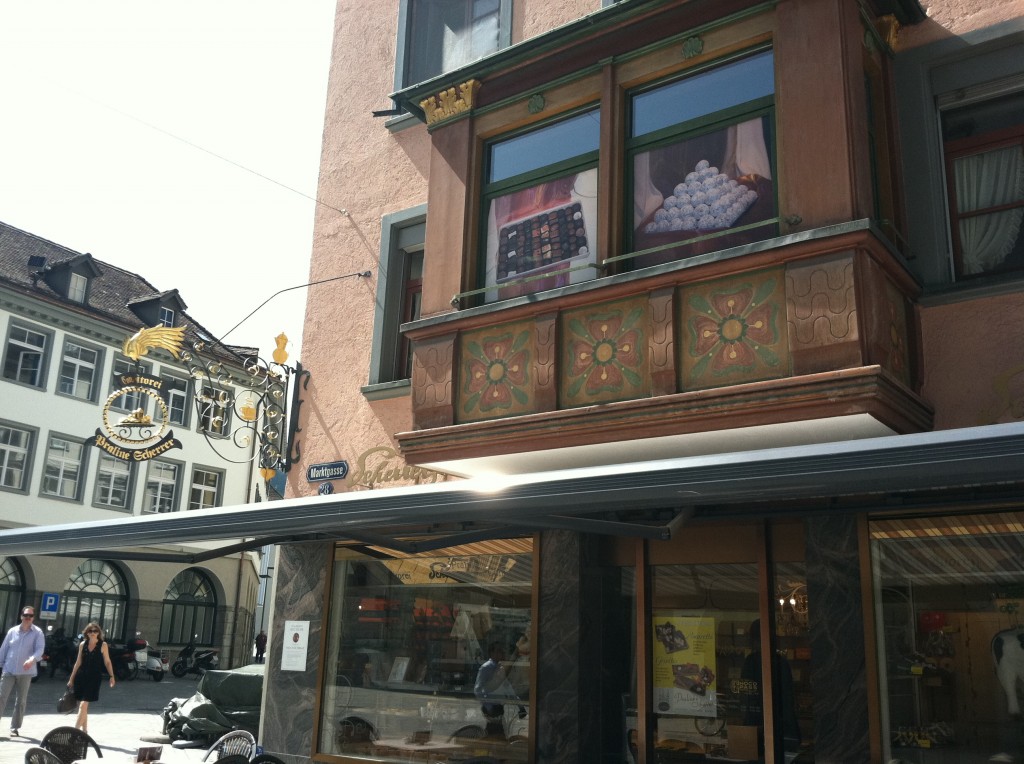
Regardless of where these entertaining or proud guild signs can be spotted, they are always worth the inspection. Sometimes they even have multiple references to the trade or commodity being advertised – as in the Colmar Charcuterie Zimmerlin – and make more than one attempt to reach the viewer, a subtle merchandising technique antecedent of subliminal sales in modern commercials. Other signs over old roads, as in the below silhouetted highly visible tandem pair in Grabs, Switzerland, share in their appeal to the traveler: on the left one sees the stable for horses or perhaps horseshoe repair, on the right is the conveyance coach that sometimes marks a mode of transport or otherwise signifies a posthouse for a night’s stay or longer. Either way, it might be the same family making more than one crafty profit from passersby on either side of the street.
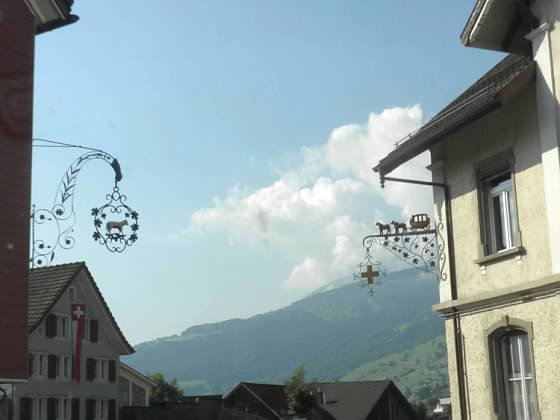
Here also is the perennial necessity of the bootmaker (Schuhmacher), whose leather craft could hardly be more important given the dubious quality of roads outside cobbled stone streets, because if the feet are uncomfortable, the whole body will be painfully aware of how much longer the journey seems.
